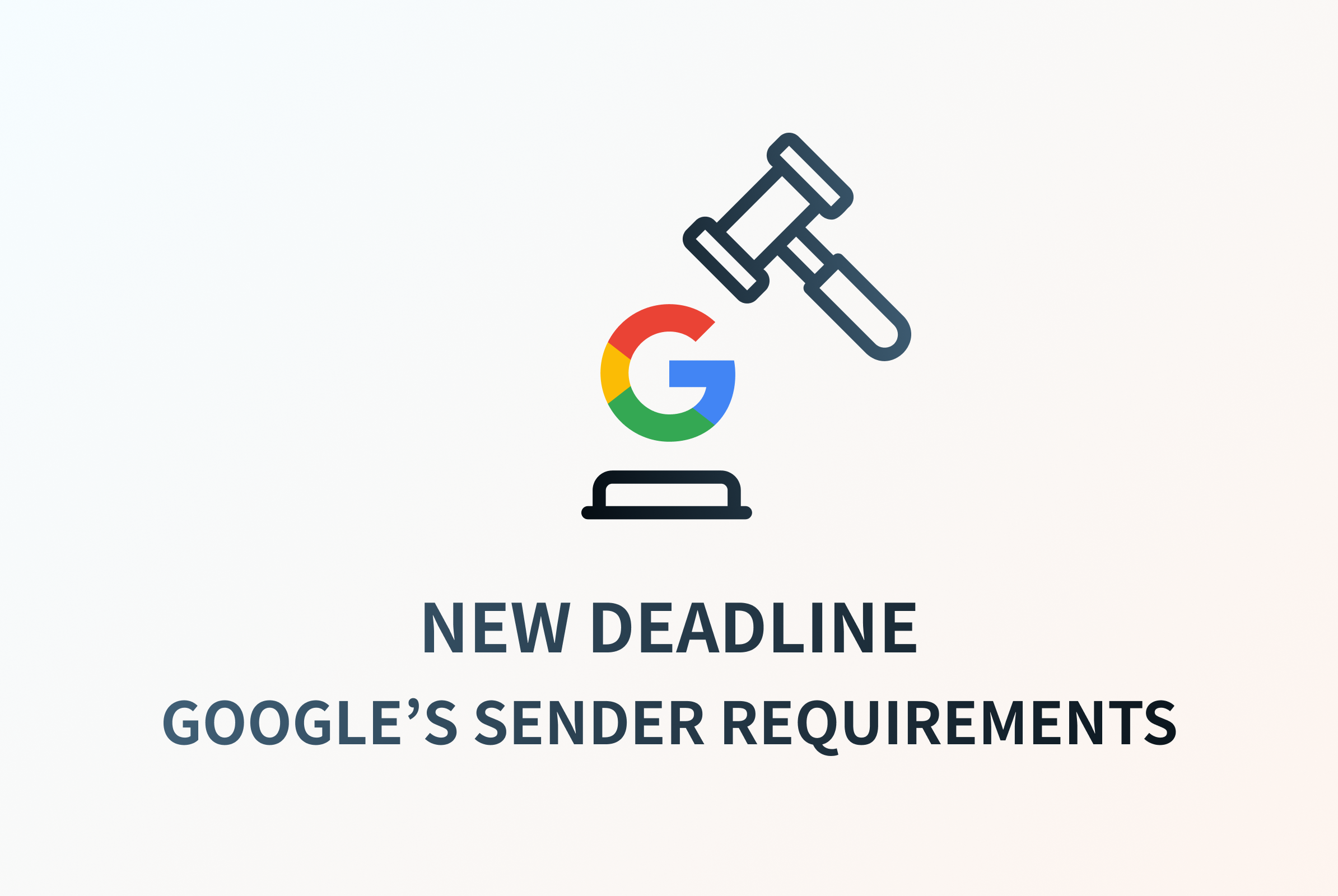Despite the upcoming changes announced by Gmail and Yahoo for 2024, email remains one of the most effective marketing tools. Even with the growing popularity of social media and instant messaging platforms, email is here to stay. However, given the billions of emails sent daily, ensuring your message reaches the recipient's inbox can be a significant challenge.
Email deliverability isn't just about creating a convincing message or a captivating subject line. It extends beyond aesthetic considerations to include important technical details, such as your DNS settings, your blue Gmail checkmark, and your logo in your customer’s inbox. While these pieces may seem insignificant to the untrained eye, those familiar with the intricacies of email deliverability recognize its substantial impact.
What is the blue Gmail Checkmark?
In your Gmail inbox, certain emails might catch your attention because they carry a small blue checkmark and company logo next to the sender's name. This is not a decorative feature but verifies that the email is coming from that specific verified company. This blue checkmark is an indication that the sender has gone through Google's stringent verification process and has been deemed legitimate. (And we all know how strict Google can be with regard to mass sending right?)

While obtaining your logo and checkmark can be a bit demanding, requiring the implementation of several best email practices such as setting up SPF, DKIM, DMARC, and BIMI records, it's something that Palisade can efficiently handle for you. We specialize in these technical measures that validate your identity to email servers, ensuring your domain and emails are authenticated. With us managing the process, you can pave the way for your blue Gmail checkmark with ease.
How does Email Deliverability work?
Email deliverability is a complex process that hinges on many factors. When you send an email, it doesn't go straight from your outbox to the recipient's inbox. Instead, it goes through multiple stages and checks. The email's first stop is the recipient's mail server. This server communicates with your server to verify the email's legitimacy. They exchange information in what is akin to a digital handshake. If the recipient's mail server is satisfied with the information it receives, it accepts your email.
However, the hurdles don't end there. The email now has to deal with the final gatekeeper - the spam filter. These are intelligent algorithms designed to sift through incoming emails and weed out potential spam. They scrutinize various aspects like the sender's reputation, domain authentication, and the email's content. If your email passes these checks, it finally lands in the recipient's inbox. The blue Gmail checkmark is a testament to having successfully navigated these complex checks.
How does the blue Gmail Checkmark Improve your Email Deliverability?
That blue Gmail checkmark isn't just for looks—it's your ticket to being seen as a legitimate email sender. Google's given you the thumbs up, which means you've passed all their tough tests. This is super important for making sure your emails get into your client's inbox instead of being dumped into the spam folder by Google.
Think of the blue Gmail checkmark as a badge of honor in the email marketing world. It's a big, flashing sign to the person getting your email that you're the real deal. And it's not just about trust — it can actually help get your emails opened more. When people see that blue checkmark, they know your email isn't spam, which means they're more likely to open it and check out what you've got to say.
💡 Our case studies have shown an average increase of 39% in ourclient’s email open rates!
Plus, the blue Gmail checkmark can seriously cut down on bounce rates and spam reports. If your emails are always getting through and not flagged as spam, it makes you look good as a sender. This is a win-win situation, because a good reputation makes your emails more deliverable, which then boosts your reputation even more.
But remember, the blue Gmail checkmark isn't the be-all and end-all of email deliverability. Other stuff matters too, like the content and format of your email, your reputation as a sender, whether your domain's authenticated (SPF, DKIM, and DMARC), and if there are any fishy links or attachments.
So while the blue checkmark is a pretty cool tool to have, you've gotta look at everything to make your email marketing really effective.
So, how do you get the blue Gmail Checkmark?
To determine that an email is verified and to approve your blue checkmark, Gmail uses the following:
- BIMI: An open standard that allows email senders to use their brand logo in emails. BIMI helps give email recipients and email security systems increased confidence in the source of emails.
- VMC: A digital certificate issued by a certificate authority that verifies logo ownership. (This goes into your BIMI Record)
- DMARC: A standard that helps email security systems filter and separate real messages from potentially spoofed ones. Set up your SPF Records correctly Set up your DKIM Records correctly Create a valid DMARC record and ensure that your policy is closed (quarantine or reject).
Struggling with email deliverability? Let US help you navigate the complexities. We specialize in helping you earn that blue Gmail checkmark, improving your deliverability, and boosting your email recognition. Increased conversions and sales are just a click away. Start with our free email deliverability score and let us help increase your email conversions!

.png)
.png)


.png)
.png)
